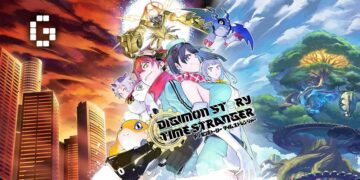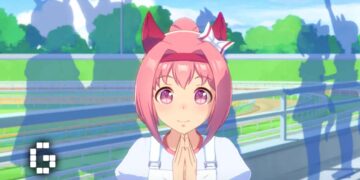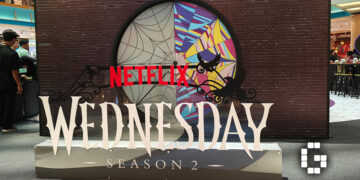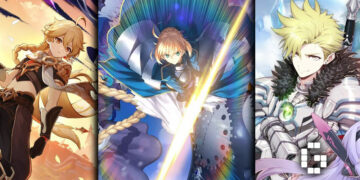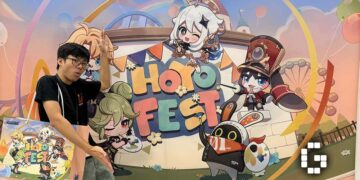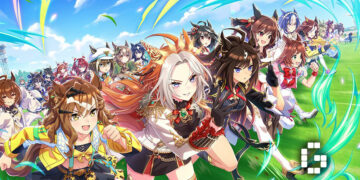During our time at the Tokyo Game Show 2023, we got to speak with the developers of Final Fantasy VII Rebirth, namely Producer Yoshinori Kitase, Director Naoki Hamaguchi, and Creative Director Tetsuya Nomura about the game in an interview.

Producer Yoshinori Kitase is currently the head of Square Enix’s Creative Business Unit I and the Final Fantasy series Brand Manager, known for directing and producing many games in the franchise.
Meanwhile, Naoki Hamaguchi has been with the series since Final Fantasy XII and is the director of both Final Fantasy VII Rebirth and the previous entry, Final Fantasy VII Remake.

Creative Director Tetsuya Nomura was the lead character designer for the original Final Fantasy VII and has led development on many Square Enix projects since, including the Kingdom Hearts series. He directed Final Fantasy VII Remake alongside Naoki Hamaguchi and now serves as creative director for the sequel, Final Fantasy VII Rebirth.
In this interview, they unveiled to us many details about Final Fantasy VII Rebirth, including information about the characters, battle system, world exploration, and more.
Final Fantasy VII Rebirth will feature new characters such as Red XIII and Cait Sith, so what players can expect to see how they will fit into the party narrative and gameplay?

Tetsuya Nomura: So I’ll start out by telling you how they fit into the story. Red XIII actually appeared as a guest character in Final Fantasy VII Remake. He appears again as a full playable character in Rebirth.
In Final Fantasy VII Rebirth, he’ll be traveling together with Cloud and his party, and you will actually get to visit Red XIII’s home which is in Cosmo Canyon. You can find out a lot more about his background history and who he is as a character there.
As for Cait Sith, this character did appear just for a very, very short period in the original 7 Remake. He’s back now and mainly appears in the Gold Saucer area, where you’ll first encounter him as a kind of fortune-telling robot.
But obviously, people who’ve played the original Final Fantasy 7 will know he’s got a big secret, and you’ll get to see that secret and find out who he actually is in Rebirth. So that covers roughly where they sit in the story.

Naoki Hamaguchi: And now we talk about how they play in battle, and obviously, they are very different characters to the other members of the party, which was featured in Final Fantasy VII Remake. So we’ve been deliberately set out to make them feel and play very differently and have their own unique battle systems and mechanics.
So start out with Red XIII. He’s pretty much a melee-focused character, but he’s not just a very simple, just stand next to the enemy and attack kind of character. We’ve given him a focus on attack and defense and balancing the two out. And how we’ve done that is he’s got a unique gauge called the Revenge Gauge.
I can’t remember if that’s localized differently, but in Japanese, it’s called the Revenge Gauge. And that builds up when you block enemy attacks. When you build up that gauge, you can then use it to unleash all kinds of unique abilities, some of which are attacking abilities, others are more defensive or buffing abilities, etc. So he’s got a unique playstyle that relies on balancing between attacking with him and guarding the enemy’s flow.

In terms of Cait Sith, obviously, we haven’t shown much of Cait Sith in battle. I can only talk within the limits of what we’ve shown in our video. But if you remember playing the original Final Fantasy VII, you remember what kind of character he was. He had a lot of luck-based elements like the dice attack and things like that. So you could wait for further information, and find out the specifics of what he is, and what he does in battle, but he’s still going to have that luck-based random element as a very strong part of his combat style.
The game seems to be even more massive from the latest trailer, so can you share with us the content scope and maybe an estimate of total playtime?

Naoki Hamaguchi: Okay, so to give you a comparison about the scale of the game and the volume of the gameplay compared to Final Fantasy VII Remake, if you think back to the Remake, essentially completing the main story, not doing too many of the side quests or side content in Remake would probably take most players around 30 to 35 hours to complete the game.
In terms of the main content only for Final Fantasy VII Rebirth, I think there’s a little bit more in there than in Remake, so that probably takes most players between 35 to just over 40 hours if you only concentrate on the main storyline. So there is more core story content as well. However, one of the big differences between Final Fantasy VII Remake and Final Fantasy VII Rebirth is that in Rebirth we’ve got the world map with a huge amount of extra side content that you can play and discover as well.
And I don’t imagine that there’ll be that many players who will try and actually see absolutely everything and experience all of that in one playthrough. But if there was a player who tried to do everything and complete everything in the game, see everything in the game, it would easily take them over a hundred hours to see all of the content.
So we can see that the game now focuses more on exploration with a much bigger world map. Can you talk more about the idea behind making a more expansive experience?
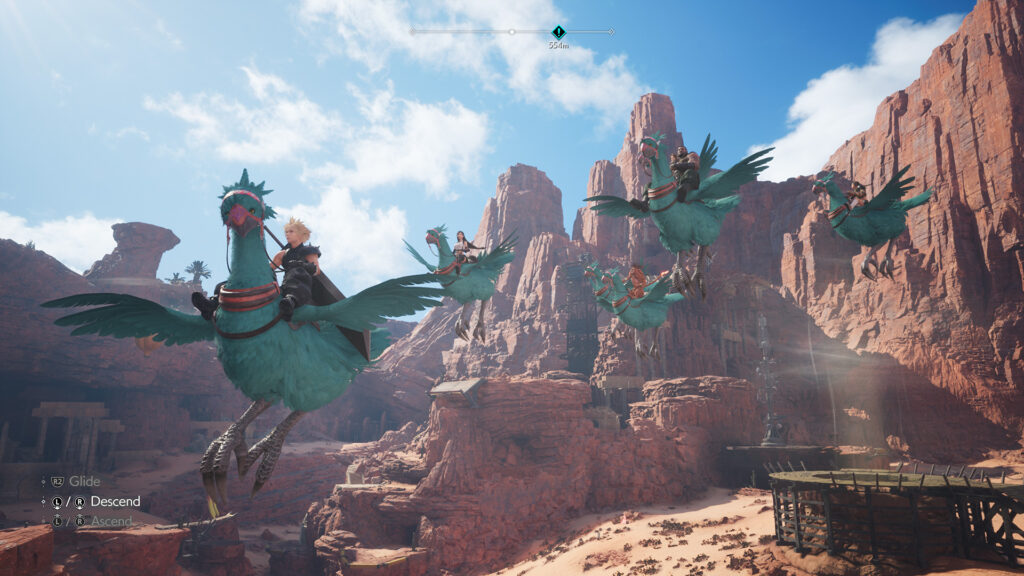
Naoki Hamaguchi: I can talk about the way we approached that and why we did the game in this way. Really the main reason why we wanted to have that focus on the exploration is because that’s the experience that players had with that same part of the original Final Fantasy VII when they go out onto the world map. And you can explore freely around this massive world and feel the scale of the world.
Obviously, in the original Final Fantasy VII, we had some technical limitations. So, for example, when you found a town or a dungeon, etc. There’d be a little icon of that town. You’d select that icon, and then you’d transfer to a different location for the town map, etc. Because that’s the only way we could do it in those days.
We tried to recreate that in Final Fantasy VII Rebirth, by creating that one seamless map, which contains everything in the world. So you’ve got all of the different continents, all of the different towns, the different dungeons, and they’re all part of that one same game space, and you could travel between them absolutely seamlessly.

So we felt that this all goes back to the idea of recreating that same experience that the players of the original Final Fantasy VII had because if we’d done it differently, it would have been easier to develop. We could have created, like, a hub portal area, where you select a map and you travel to that and then go to a different map, but we felt that that approach really wouldn’t give you that feeling of exploring this massive world.
So, in the end, it was a lot harder on the development team, there were a lot more challenges to doing it that way, but we absolutely felt we had to make it in that seamless way, in order just to recreate that same fun and that same experience that players of the original game had.
A little bit more to go into how you actually explore that world. I think a lot of games have these massive open worlds and let players explore them, there are two different ways they generally approach that. So the first type. It’s where you just have the world and you appear in that world, and then from the beginning you can go anywhere, you can do anything in any order.
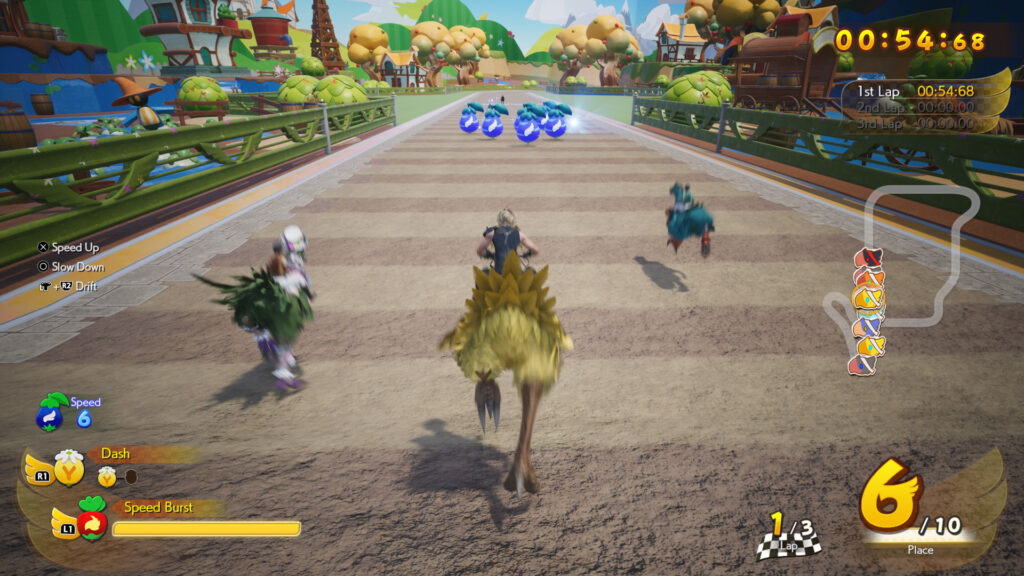
This is the direction we went in for Final Fantasy VII Rebirth, where you start in a fairly wide area with lots to do, but then as the main story progresses, you get more abilities to go different places, and the world expands where you get new areas opening up that you can then go visit.
And also at the same time, you can go back to, for example, the previous area, and there’ll be new content there. There will be a new story that has opened up in that area too. That’s very much the approach that we chose for Final Fantasy VII Rebirth.
Will there be any big update to the battle system?

Naoki Hamaguchi: Okay, so the main new addition to the battle system is what we call the Synergy System. I’d just like to go into how we came up with the idea for that system and how it came to be in the game. It might be a little bit surprising because we didn’t actually start with the intention of looking at the battle system and working out how do we want to add to it, and what we want to change on it.
The Synergy System actually came more from discussions on the story of the game. Um, I’m sorry, if you played the original Final Fantasy VII, you’ll know what we mean here. But the section of the original story that stays covered in Final Fantasy VII Rebirth is from when Cloud and the team leave Midgar and when they visit the Forgotten Capital.

Obviously, a very dramatic event happened with Aerith at the Forgotten Capital. But in the journey between those two locations, you really see the team bonding more. They come together, learn more about each other, deepen their bonds of friendship, and get to know each other a bit more.
So I really felt it would be a good idea to have that kind of narrative element reflected in the battle system as well. It’d just feel nicer and more holistic for the players if that was reflected somehow. And the answer we came up with that, to do that, was creating this synergy system where characters combine their attacks together.
And to talk a bit more about, the philosophy and how we incorporated the Synergy System in the game and why it’s developed in the way it is. To do that, I need to go back a little bit and talk about the overall philosophy for the battle system in the Remake series, which featured in Final Fantasy VII Remake and its continuation.

The idea is to merge the command-based gameplay with action-style gameplay. And every element of the battle system can be categorized into one of those two roles, whether it’s more of an action element or more of a menu style, command style element that runs through the whole battle system, and of course that affects the design of the synergy system as well, where we split the synergy moves that you can do into two specific types.
So you’ve got what’s called, Synergy Skills, and then you’ve got Synergy Abilities. The Synergy Skills are very much the action side of the gameplay. So with those, you can use them quickly and immediately. You don’t need to use an ATB charge in order to use those and you can use them quite frequently, but they require a bit of player skill.
So the players will actually have to interact with those abilities and use an action gameplay style control that depends differently on different abilities, and what you need to do. So, for example, some of them require you to do a block of an enemy attack at just the right pinpoint timing, and then you get the special ability.

Some of them are charge-based attacks. You hold down the button, you have to wait for the enemy to be in the right position, and then unleash the attack. For others, for example, when launching the enemy into the air, you can then follow up with an aerial combo. There’s a strong action element to the Synergy Skills.
And on the other side of things, we’ve got the Synergy Abilities, which have more to do with the menu, the command-based style of gameplay, and a lot more strategic in that sense. So you have a special gauge you need to charge up, called the Synergy Game, and you can consume that to use these Synergy Abilities. So that’s how we split the Synergy System and involves both the action side of the gameplay and also the more strategic, menu-style gameplay.
Does Final Fantasy VII Rebirth import save files from Remake or Intergrade? And whatever the answer to that, how does Rebirth deal with character affinity and affection? Or is there a system for that?

Naoki Hamaguchi: We haven’t got a full carryover of save data between the two games, so you won’t be carrying over your character levels, your equipment, your material, etc. You will essentially have to start from another starting point. The reason for that is something that we decided when we put together the whole plan for the Remake Trilogy.
We want to obviously link the story in between and follow the same characters in the same story between all three of the games, but we wanted to make each game also work as a standalone gameplay experience so that people who want to join the story and join the series from halfway through could do that without feeling left out.
So you do start again from a different level. And have to collect your stuff again, but quite an interesting little thing there is that the start level you start at in Rebirth is not zero, it’s not one, it’s based on the level we thought players of the original Final Fantasy VII would be at, at the point when they’ve left Midgar, which is obviously the point in the story when Rebirth starts. So it is aligned in that way, but it’s not a carryover as such.

So I just mentioned how you don’t carry over the data completely from the previous game. But there is a little bonus there for people who have saved data from either Final Fantasy VII Remake or Final Fantasy VII Remake Integrade on the PlayStation 5 already. If you do have that data and you played the original game on the same console, you’ll get a special piece of Summoning Materia from the beginning of the game, which is taken from the original Final Fantasy VII Remake. So, there is that little bonus there for players who had the previous game.
In terms of the same system we had in the original Final Fantasy VII Remake as I mentioned before, that doesn’t really work with the concept of having each game work as a standalone. So we didn’t carry over the same parameters, the same numbers from the original game. But there is definitely a similar kind of character affinity level system in Final Fantasy VII Rebirth.
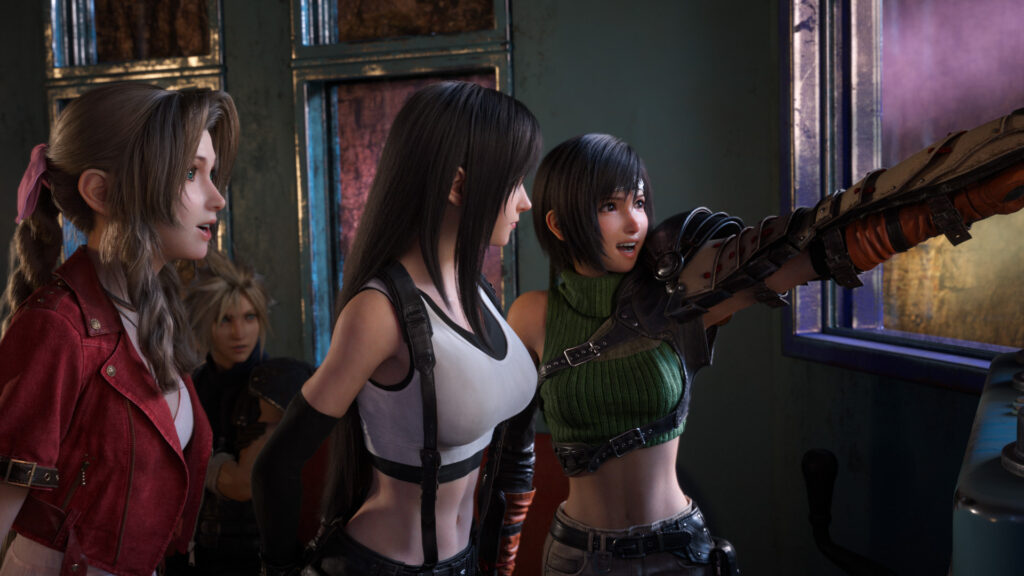
Perhaps one of the scenes that most people really, have high expectations for in this game is the dating scene in the Gold Saucer. So, obviously, to reflect that and give players what they want with that, we’ve created another system where all your actions throughout the story, both in the main story, in the side contents on the world map, and more, will have a reflection on that, and you’ll be able to increase your affinity to different characters. And that is finally reflected in the gameplay as well. So, if you’re looking for that kind of system, don’t worry, you’ll get exactly what you’re looking for there.
Could you tell us a little story about the development of the game? Like how was the challenge compared to the previous game?
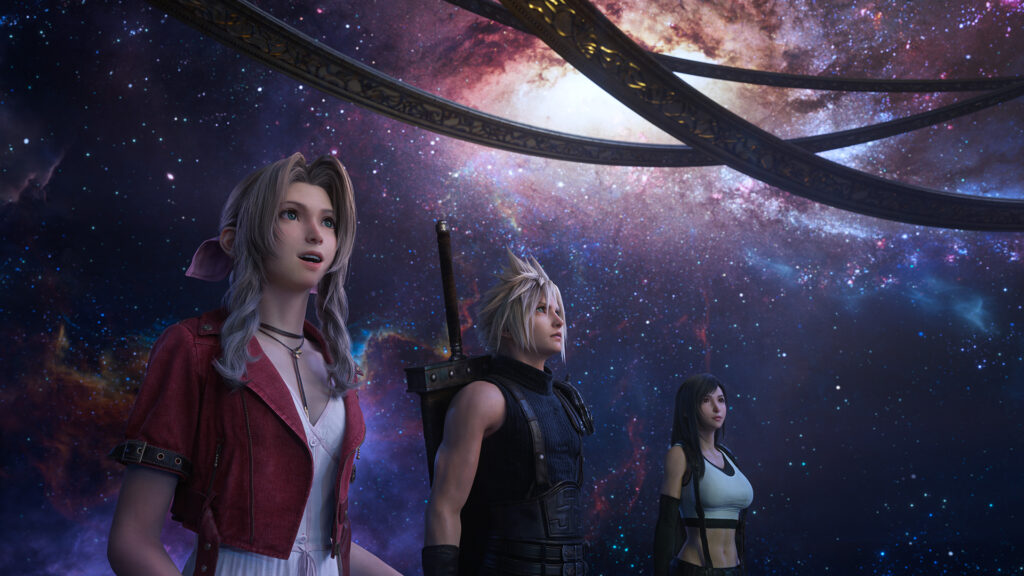
Naoki Hamaguchi: In terms of the differences between developing Final Fantasy VII Remake and Final Fantasy VII Rebirth, I think it was a very big change in the overall way that we approach development in terms of communication specifically. And this is all down to do with the fact that obviously, the effects of the coronavirus and the lockdowns happened right as we were in the middle of developing.
So, when we were developing Final Fantasy VII Remake, everyone was in the office together, and we all talked face-to-face. Not all information was shared in face-to-face meetings, but a lot of discussion did happen in that way. Obviously, when we started work on Final Fantasy VII Rebirth, everyone at that time was working remotely and we were communicating with various communication tools.

I think the main one we used in development is Slack where we can talk to each other. There are advantages and disadvantages to the development of using tools and communicating in that manner. I think in terms of the positives, one very good thing was that everyone could get together on the same channels and talk together.
Obviously, only the main upper-level management guys and some of the people directly involved in anything at any one time would be talking, but everyone else had an awareness of that. So I think that was very different. It was very good because people could pick up on discussions without having to have them told directly.

And sometimes people from completely unrelated departments would jump on something and come up with a really good idea. So that was a really good positive for that. I think it fits with a modern development idea and then a development style. Yeah. On the downside, of course, I think the fact that we used Slack and had those Channels for everyone made some people a little bit lazy in communication They felt like if I just threw something on the Slack channel, someone’s gonna pick it up, someone’s gonna run with this and sometimes people didn’t so they were there were disadvantages, too I think it was it was a big challenge obviously, but it was it was a very interesting way to approach it.
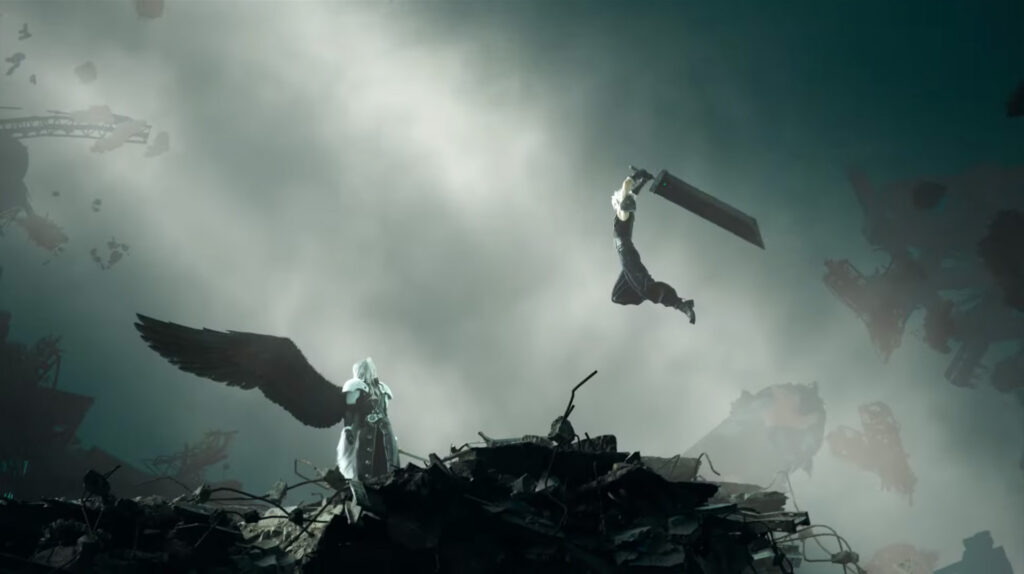
Rebirth
We would like to thank Square Enix for setting up this interview for us. We would also love to thank Yoshinori Kitase, Naoki Hamaguchi, and Tetsuya Nomura for taking the time to answer our questions.
As revealed during the latest State of Play, Final Fantasy VII Rebirth is slated to release on 29 February 2024 exclusively for the PlayStation 5 and for more details regarding the many editions of the game, you can read about them here.
This interview was edited for clarity.




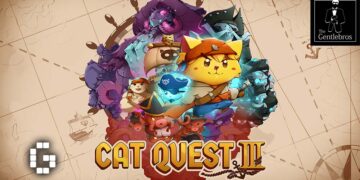



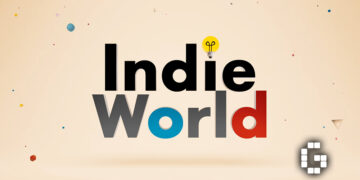


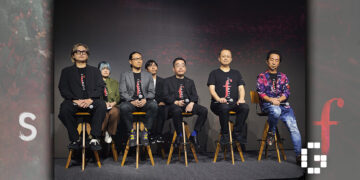

![[EXCLUSIVE] Creative Masterminds from Gearbox Software Reveal What Makes Borderlands 4 Worth the Wait](https://cdn.gamerbraves.com/2025/07/Borderlands-4-at-Bilibili-World-2025_Interview_FI-360x180.jpg)


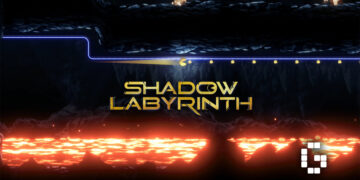

![[ASIA EXCLUSIVE] Bringing Back a Classic: Inside the Making of FINAL FANTASY TACTICS – The Ivalice Chronicles](https://cdn.gamerbraves.com/2025/06/FFT-Ivalice-Chronicles_Interview_FI2-360x180.jpg)
![[TGS2023] Final Fantasy VII Rebirth Director Naoki Hamaguchi, Tetsuya Nomura & Producer Yoshinori Kitase Says that Synergy Battle System Came From Wanting Players Feel Closer to Their Party Members in Interview](https://cdn.gamerbraves.com/2023/09/Featured-Image-Final-Fantasy-VII-Rebirth-Interview-750x392.jpg)
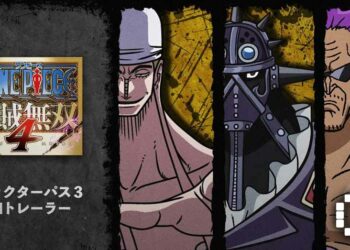


![[Guide] GODDESS OF VICTORY: NIKKE – Should You Pull For Marciana](https://cdn.gamerbraves.com/2023/09/Featured-Image-Goddess-of-Victory-Nikke-Should-You-Pull-For-Marciana-75x75.jpg)
